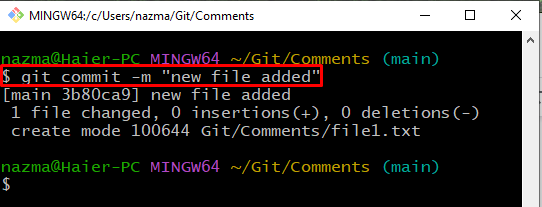This blog will talk about:
Let’s move ahead toward the mentioned steps.
Best Practices for Writing a Good Git Commit Message
To write a good Git commit message, there are a few things that users should keep in mind:
- Don’t use a punctuation mark at the end of the message.
- Cross-check spelling after writing.
- Avoid unnecessary capitalization.
How to Commit Changes?
To commit changes in Git local repository, firstly, we will move to the Git local repository. After doing so, create and add a new file to the required repository. After that, update the repository by committing the changes.
Now, we will practically implement the given procedure.
Step 1: Move to Git Repository
First, move to the desired Git repository using the “cd” command:
Step 2: Create New File
Run the “touch” command to create a new file:
Step 3: Track New File
Now, track a new file by utilizing “git add” command:
Step 4: Update to Repository
Next, type out the “git commit” command with the “-m” option to update the repository by committing the added changes:
We have explained the procedure of writing a good commit message both theoretically and practically.
Conclusion
Best practices to write a Good Commit message are: Don’t use a punctuation mark at the message end, Cross-check spelling, and avoid unnecessary capitalization. For the purpose of committing changes to the Git local repository, firstly, move to the local repository. Then, create and add a new file to the required repository. After that, update the repository by committing the changes. This blog discussed and applied the best practices for writing a good commit message.




